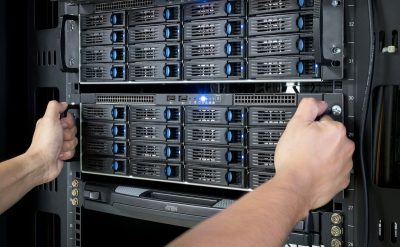The year 2019 will be remembered by enterprises as the year of storage innovation with security in focus—the development of all-flash storage technology led to a reduction in the prices of storage solutions. All-flash storage solutions became a secondary requirement; thus, we saw a wider implementation, not in enterprises but in consumer devices. The main battle was for better analytics and AI solutions to build better storage platforms, reducing the reoccurrence of data providing insightful actions to data. The next-generation of the data storage market is expected to witness steady growth over time with a CAGR of 12.5% from USD 56.80 billion in 2019 to USD 188.76 billion in 2029 for the forecast period of 2020 to 2029, according to Research for Markets.
Let’s look at some of the trends of 2019 that worked pretty well,
The prices of NAND and SSD fell since most of the flash represents the bulk of an SSD. At the start of 2019, Forward Insights predicted the prices to decline by 30% or more for both NAND chips and SSDs. The price decline was continuous throughout 2019 as the oversupply and businesses moving to third-party storage solutions were an easier option. Most of the research firms had predicted that with the start of 2019, the SSDs process could turn out to be half of what was during the start in 2018. According to John Kim, Analyst at market research firm, TrendFocus, based in Cupertino, California, the prices per gigabyte of NAND will drop from 19.5% in 2018 to 13.7% by the end of 2019, 11.2% in 2020, 8.8% in 2021, and 7% in 2022. The shift to denser 3D NAND technology is helping in driving the cost of flash down, manufacturers are currently shifting from 32-layer to 64-layer 3D flash, and in early 2019, there was an increase to 96-layer. Additional layers offer better storage technology for the same physical footprint as used during SSD at the time of the two-dimensional technology.
The above statistics were probably best for the cloud storage providers or storage vendors; most of the businesses moved away from the traditional storage solutions of on-premise configuration to public or private cloud. Cloud formed the basis of a new storage revolution driven by connectivity; businesses were now armed with private cloud solutions without the active need for resources. Reduction in cost required for improvement was one of the biggest reasons why many of the businesses moved away from upgrading their present storage. Organizations with cloud had the freedom to choose between different providers and services on storage. Hybrid- and multi-cloud options made businesses move away from the on-premise storage. Though many of the critical applications and data still remain on-premise as the security and data protection become synchronous, organizations will eventually move.
AI and analytics for the storage will bring improved configurations for all types of data. It will increase the reliability, performance, and availability for all data storage units. Many of the data storage providers are bringing regulation and implementing laws to improve protection against data theft.
The challenge of security is still glaring with new threats of misconfiguration and internal users affecting many of the cloud providers. The stage managers look ahead to 2020; most analysts are expecting a stronger data storage market than in 2019. Even key storage trends are set to shape the market for several years and are all set to grow with new technologies pushing prices lower and opening up opportunities for enterprises. The year 2019 was a mixed bag for the storage market, year-end figures are not available yet, but IDC reported a slight decline in the total spending in the first and second quarters of the year. While the third quarter saw a 1.3% year-over-year increase in global spending on the enterprise external storage systems with the total storage capacity shipments increasing every quarter. Many regions around the world saw strong enterprise storage growth, which is particularly applicable for Asia, while the US and Europe witnessed stagnate sales. Economic and political uncertainty has caused many of the IT managers to take a cautious approach toward investing in the storage unit for 2019, many leaders believe that the uncertainty might end in 2020 and we might see a change in prospects.
Storage spending forecasts,
Analysts are expecting the overall IT spending to grow in 2020. Gartner is projecting the growth to increase by 3.7% in IT spending, that is, up by 0.4% in 2019. John-David Lovelock, Research Vice President at Gartner, said in a statement that the slowdown in IT spending in 2019 is not expected to spill over in 2020 despite the concerns from the storage vendors about the recession and businesses putting brakes on the IT spending. The dominance in the storage market is still being led by Dell Technologies, holding a third of the enterprise storage market, and we have NetApp and HPE battling for second place.
Forrester has predicted that 2020 will be a pivotal year for data strategy, which will be led by businesses’ increased spending toward data storage and data management. Enterprises are moving more toward cloud and exploiting edge computing with new coverage with regard to the transaction cost of data processing, and it’s all set to outstrip storage. According to a Forrester prediction in 2020, advanced firms will understand the benefits of getting off all this required thing right; it will double or triple their data strategy budget to get past the competitors.
Automated data management
Machine learning and Artificial Intelligence (AI) have increasingly combined with enterprise applications of different verticals, and with that, businesses are increasingly looking to apply the technology to data management. Vendors are adding different machine learning and AI capabilities to improve data management processes with added self-configuring and self-tuning so that the database admins can focus on more important tasks in hand.
Enterprises Strategy Group’s (ESG) Christophe Bertrand wrote that intelligent data management or the intelligent reuse of data will become more pervasive in 2020. He elaborates that the vendors will be able to successfully transform their platforms to include various workflows and instrumentation to make sharing for the data more compliant. It will bring clarity in the data management and even build lasting differentiation in the market.
Here are 4 different types of storage technology types for 2020,
1. SSDs and flash arrays
For 2020, if businesses look toward the flash storage growth, it will rise but will be comparatively slow. Most of the organizations and storage providers have upgraded their already set legacy system, even converting to SSDs as one of the most cost-effective. According to the IDC’s Worldwide Quarterly Enterprise Storage Systems Tracker, during the third quarter of 2019, All-Flash Array (AFA) sales saw a strong double-digit growth while the other storage solutions such as AFA and HDD-only markets saw slower growth. The trend for storage hardware will continue for 2020 due to advances in the fabrication capabilities. Hynix, a South Korea-based company, began the production of a 128-layer 4D NAND flash and is set to reduce the prices of SSDs further.
2. Cloud storage
Cloud storage remains one of the most imperative aspects, but the current cloud cost seems to slow it down. The growing public cloud costs and impediments with cost management are leading many of the enterprises to move toward the hybrid storage model.
Senior Analyst Scott Sinclair in ESG’s Data Storage Predictions for 2020 noted that the enterprises have currently moved at least one of their workloads that were on the public cloud back to on-premise in 2019. The perception that would start to fade held by many of the earlier businesses was that after a certain period, every business application would eventually shift to the public cloud. Hybrid cloud infrastructure is currently the most heavily used solution in modern IT, and for digital businesses, data is increasing both on-premise and off-premise.
Sinclair recently predicted that at least 1 public cloud storage provider would be acquiring a hybrid or on-premise data storage company in 2020.
3. Software-Defined Network (SDN)
Software-defined is rapidly becoming a trend for businesses to follow. According to recent reports, the global software-defined storage market could be worth more than $7 billion in 2020. Bruce Milne, VP and CMO of IT service management company Pivot3, said in a statement that in 2020, a new category would be capturing the essence, which will be a combination of SDN and hybrid cloud. Hardware still will be required, but it can be located anywhere, and that’s not important. The software will continue to capture the market, and the location of hardware will become irrelevant in 2020.
4. Hyperconverged storage
Hybrid cloud and software-defined infrastructure are leading to higher demands for hyperconverged storage. Software-defined storage environment, hybrid cloud, multi-cloud are the ideal examples for the newly developed hyper-converged storage with various vendors such as Cisco, Dell, and HPE building on the technology. According to Mordor Intelligence, the hyper-converged infrastructure market is growing at a CAGR of 13% for the 5-year period, and it will continue to grow through 2024.
The current shift in the trend of the businesses toward edge computing is improving the adoption of hyperconverged storage. Hyperconverged appliances are suitable for remotely located settings, and enterprises are finding it more and more cost-effective to improve the storage and processing at the edge of the network rather than transmitting everything to the public cloud.
5. Storage security
The spending on storage security is all set to rise in 2020. A complicated geopolitical environment across the world is pushing the organizations to make compliance as one of the top priorities for business setup. The overall spending on security increased by 10.5% in 2019, and cloud security is projected to grow by 41.2% over the next 5 years. Businesses are demanding security solutions that are dynamic to deal with different storage solutions. According to Gartner, transparency and traceability are one of the top 10 strategic technology trends for 2020.
Compliance is one of the most basic businesses that need to be fulfilled today to survive or even work. As the storage and data manager move toward the development of better utilization, there will be bigger questions about data integrity and usage; the process of it is something that will not be addressed.
Conclusion
The innovation in storage solutions is set to become the breaking point bringing storage at par with the current compliance requirements. As data becomes the prime mover for the businesses over the next few years, AI/ML, blockchain, and IoT will be changing the storage development for the businesses. As the loadable work increases, enterprises are looking toward new technologies that will assist them in storing and processing more data with speed. So how will the data storage change the business scenario? Our whitepapers from various storage leaders will provide the best available resource; click here to read more.














